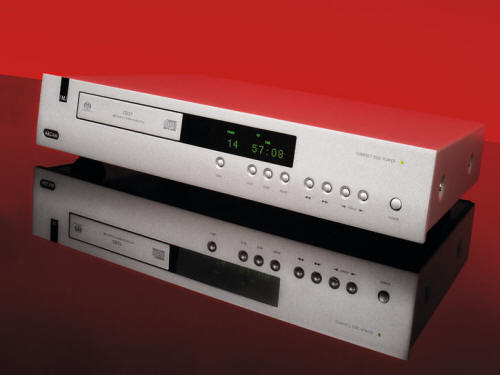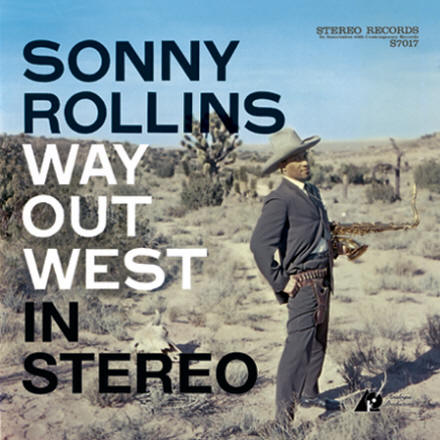
You are reading the older HTML site
Positive Feedback ISSUE
43may/june 2009
arcam
FMJ CD37 CD/SACD player
as reviewed by Jeff Parks

|
JEFF PARK'S SYSTEM LOUDSPEAKERS
ELECTRONICS
SOURCES
CABLES
ACCESSORIES
|
It seems like it was a short time ago that I reviewed the FMJ CD36T for Positive-Feedback Issue 32. Boy, how time flies when you have a house full of kids. During the FMJ CD36T's review my daughter was 10 months old. Now my daughter is 32 months old, and a big sister to her brother who is just shy of his first birthday. Having one toddler and one "almost" toddler keeps my wife and I pretty busy. Believe it or not, I still find time to sit down and listen to music. With all of the chaos in the house, when the kids settle down for the night, it is time for quiet adjournment from my day. I grab a glass of my favorite beverage and retreat to my soundroom. Now more than ever I truly appreciate being an audiophile, and the associated joy this hobby brings to both my emotional and intellectual health.
Last Fall I contacted the US importer for Arcam and inquired if they had any new gear for review. As an outgrowth of that conversation I was offered two pieces of gear to review—the Arcam FMJ A38 integrated amplifier Issue 41, and the FMJ CD37 Compact Disc Player (CDP). Having reviewed and bought a FMJ CD36T along with reviewing the Diva CD192, Issue 17, I was curious to hear if the DSD based CD37 was another step up in the audio food chain as compared to the highly praised CD36T. Does the CD37 stand up to the challenge? We shall see.
SACD, now? Why?
Overall the basic appearance of the CD37 is the same as the CD36. In fact, if it weren't for the CD37 designation the two players are almost impossible to tell apart. The difference is when playing SACDs, or CDs with an SACD layer, the CD37 will play and display to the listener that a SACD is being played, whereas, the now discontinued CD36 did not.
Being truly curious regarding the changes to the CD37, the discontinuation of the CD36T and the Diva CD192, I felt it necessary to get an explanation from Geoff Meads—Arcam's Corporate Brands Manager. I was interested in finding out the wisdom and rationalization of why two great products were discontinued. Also, why bring an SACD player to market when at this point in time SACD is all but dead due to the lack of support from the major labels. Here is a copy of our email exchange.
Facts
GM: Hi Jeff, always happy to answer questions on Arcam products!
JP: Why did you discontinue the CD36T and CD192? They were both excellent performers, and were amongst my favorite CDPs in the industry. My only guess was with the pricing of the CD192, CD36T, and now the CD37 being so close to one another that maybe the players were stepping on each other's toes as far as marketing them goes? Other than that I can't see any other reason to discontinue the players. Both were outstanding CDPs in my humble opinion.
GM: Thanks for your praise! We're very proud of both the CD36 and CD192, and both products were very popular players. However, for some time we'd wanted to offer the higher specification construction of the FMJ line across a broader range of our product line. To achieve this we integrated the entire DIVA stereo line-up into the FMJ series. This meant designing in some new technologies to get the performance we were looking for, and a rethink of the spacing of models in the range. The CD17 and CD37 being the results.
JP: Knowing that Arcam has always made outstanding CD only players why the jump to DSD and SACD? I read this question asked by another reviewer, and you were quoted as saying, "the CD37 is an audiophile player and SACD is an audiophile's format; although SACD sales may have slowed down in Europe, in the US SACD sales are quite robust." For me, having listened to a lot of SACD players, and in a few situations SACD does sound great, overall it still doesn't rock my world. I know many audiophiles who feel the same way, hence, my commitment to the Redbook CD format. I guess what I am trying to ask here is, did changing to DSD improve the CD37's musical reproduction of Redbooks CDs as compared to the CD36T? Are the Wolfsen 8741 DACs an improvement over the 8740 Wolfsen DACs used in the CD36?
GM: The desire to have an audiophile CD player that also supported SACD was the main driver here. I don't think we see SACD as a replacement to CD, more an alternative playback medium for material recorded at higher resolution. The overall software support for the format is disappointing and probably has a lot to do with the lack of original digital material available at higher resolution plus the reluctance of the record companies to remaster old material from tape in high resolution for a small number of unit sales.
Regarding the Wolfsen 8741 DAC: We've found the 8741 a significant step forward in performance over the 8740 hence its inclusion in both the CD17 and CD37. The fact is that it supports native DSD decoding is an added bonus for the CD37.
JP: I can tell both the CD36T and CD37 still use Acousteel and Stealth Mat technology along with a robust power supply. Can you elaborate any more into the design changes for the CD37 as compared to the CD36T? In other words what makes (in your opinion) the CD37 a step up, barring the 37's ability to play SACD?
GM: The CD37 is a completely different platform to that used in the CD36, it being based on our highest performing DVD player, the DV-139. The disc decoder in the CD37 (the Vaddis 888s from Zoran) offers world-class CD playback plus SACD giving us an ideal platform for a higher performance player. As a side issue the PSU in the CD37 has to be completely different to that in the CD36 as the power supply requirements are quite different (in this case using a twin toroid transformer design). Like the CD36, the CD37 features similar Acousteel, Stealth Mat and Mask of Silence screening materials. However, these are implemented differently in the CD37 as each deployment of those technologies is application specific, and the result of many, many hours of critical listening experimentation.
After communicating with Geoff Meads at Arcam, I clearly understood the rationale for the change. It still may not make me jump to SACD as my main source of digital due to my twenty-year investment in Redbook CDs, most of which have been replaced by newer re-mastered versions that sound far superior to the original digital recordings. I may, however, consider supplementing my digital library with some SACDs as Geoff Meads suggests.

More facts
Like the CD36T, the CD37 uses Acousteel materials for the case. As in the past I have found these materials result in a fairly inert or dead sounding case. The resulting sound is a deep thud when tapping the unit with your fingers, thus translating into a case that will transmit minimal sonic interferences to the internal components of the player. Using this type of damping material built into the case itself results in improved focus, better soundstaging, and instrument imaging. Another shared technology from the CD36T is the use of Stealth Mat and Mask of Silence materials placed in key locations on and in the case. Both are EMI/RFI absorbing materials that cut down these types of electromagnetic interferences that can diminish the performance of the player. The end result here is less background hiss, a blacker almost silent background, allowing the music to flow with articulate musical ease.
Once again Arcam doesn't miss a trick, like the CD36T the CD37's power supply is robust and in my opinion contributes to its sense of organic ease and excellent bass response. This is due to the use of dual toroidal main transformers, incorporating separate high capacity power supplies for analogue, servo, and digital sections. In addition to the above, Arcam uses separate ground returns ("Star" earth) for each power supply to prevent interstage noise. This is another design feature that adds to the CD37's dead silent background; thus allowing your music to flow and create a soundstage that is huge and very lifelike. Another feature is the new Wolfson 8741 DACs in dual differential mode for each channel employing pure DSD conversation that unleashes the full resolution of SACD discs with breathtaking clarity. Let's not forget Redbook CDs also sound spectacular through these DACs. My guess here is jitter has been reduced due to the DAC change. Jitter reduction, in my opinion, must be partially behind improving the CD37s sonic signature; it reproduces music with stunning musical clarity, definition, and precise imaging.

Comparisons
Alright now, I know what is on the mind of many of you out there in PFO land. How does the CD37 compare to the CD36T, is it a significant upgrade? Is it worth it to supplement my CD collection with SACDs knowing that the format is floundering (or almost dead and gone)?
Since I no longer have a CD36T in my possession I will go from memory as best as I can. As we all know the CD36T was a pretty spectacular CDP in its own right. With a solid deep bass, a detailed midrange (though a bit recessed), and a smooth creamy high-end that seemed to hold on the notes and overtones longer than any player in its price range, the CD36T is hard to beat. In the end, I bought it because it sounded less digital than any other player that had graced my system at the time of the review.
Speaking in general terms when comparing the two players, I do believe the CD37 is a step up in the audio food chain. When comparing the CD36T to the CD37, the latter beats out the former in several areas. For starters the bass production has improved. Now the CD37 goes down into the subterranean areas of bass that the CD36 only hinted at; this is its strength. Another area of superiority when comparing the CD36T to the CD37 is in the area of midrange production. As opposed to the past where the midrange was slightly recessed, it now comes out into the forefront of the soundstage where it belongs. High frequency reproduction is another great strength of the CD37; its ability to hang on to the notes has increased as compared to the CD36T. Now there's more flesh on the bones with an increased or what seems an extended high frequency reproduction while maintaining that airy quality that has always been the signature sound of Arcam FMJ CD players.
In short, the CD37 sounds a lot like the CD36T, and maintains many of its great qualities. What clearly separates the two players from one another is, overall the CD37 dramatically surpasses the CD36T in all areas of audio reproduction while still maintaining its magic.
SACD v. CD
As you know all of the above comparisons were based upon my memory of the CD36T as compared to the CD37 when playing Redbook CDs. This begs the question how does the CD37 sound as an SACD player, and how do SACDs compare to playing the same artist and title using Redbook CDs as the source through the CD37?
This had to be the most difficult section of the review to write. Why? Since Redbook CDs sounded so good while being played through the CD37, I really had no urge to listen to SACDs. Each time I wanted to sit down and compare SACD to Redbook, I got drawn into my vast CD collection; thus, I kept putting this task off. This was based upon my own self-prejudice that many "hot rod" versions of Redbook CDs, for example, many re-masters, JVC XRCD, and of course Mofi discs have left me totally satisfied with the original 16/44k format. Especially when upsampled through the CD36T, or in this case when being played through the CD37 using the new Wolfsen 8741 DAC set. On the other hand, I have heard differences between SACD and "good" Redbook CD, though not to the point of adopting an entirely different format. One more thing I need to add here, since I listen to mostly classic rock, blue grass, and alternative country along with bebop and straight ahead jazz, there aren't a lot of SACD titles out there that I don't already have on vinyl or audiophile version in Redbook. However, with the thought process of supplementing my extensive CD collection with SACD titles I enjoy, it is worth a shot to take a listen one last time—maybe this time things would be different.

Alright I give up! This time I do hear a difference between SACD and Redbook CD. Maybe this has something to do with that the fact that the CD37 decodes SACD using pure DSD conversation. One thing is for sure; I had to buy several different SACDs in order to hear a huge difference. The reason for this is many SACD titles are not originally recorded in DSD; many are recorded analog to PCM to DSD. It is these SACDs that sound more like their PCM brethren or in some cases worse as opposed to being a pure DSD recording. With SACD titles that are recorded using a pure DSD datastream, SACD clearly beats out Redbook, in my mind. It is just plain simple fact that there is more data to decode when listening to SACD as compared to Redbook CD. Even a few titles where I wasn't sure of the DSD purity, for example Sonny Rollins' Way Out West [Fantasy CCD7530SACD], sounded superior to their Redbook CD brothers and sisters. This is the first time I clearly heard differences across the board. Could this also be due to having more SACDs to choose from? Maybe, however I clearly believe it is that new Wolfsen 8741 DAC along with the Vaddis 888s disc decoder from Zoran within the CD37 that brings out the music with stunning clarity.
For the record, the last time I did any serious listening with an SACD player was with the stellar Linn 2.1, Issue 20. As I stated in the article I loved both Redbook CDs and DVDA (too bad this format never took off). On the other hand, while playing SACDs I wasn't really all that impressed with what I heard. Could that have been due to my limited SACD collection at the time? Or could it be that the CD37 just does a better job at rendering SACDs. Again, my guess is a little of both. Time and time again my notes were the same. While listening to SACD as compared to the same recording in Redbook there was more inner detail, it seemed the notes would hang on just a little longer. This time I do have to say SACD has gone a long way in leveling the playing field. It now challenges analog as the ultimate playback medium.
Will this new found appreciation for SACD convince me to drop Redbook? Nope. Again, I don't think that was the intent of Arcam when bringing the CD37 to market. The intent was to use the CD37 as a CDP that also to plays SACD and one could supplement one's more than likely extensive Redbook collection with SACDs. On that account I could not agree more.
Final thoughts
My time with the CD37 has clearly been an enjoyable one. Over the years I have had the opportunity to audition many CD players ranging in price from $2000 to $10,000 and it is the CD37 that strikes me the most. The CD37 was so enjoyable to listen to that over and over it drew me back to my soundroom. The CD37 has to be the most musical analog like CDP that I have ever heard.
What is there not to like? The CD37 throws out a huge soundstage, has killer bass, fantastic midrange, and the smoothest high frequency reproduction I have yet to hear from a CDP. If I were to nit pick at all it would be that maybe, the CD37 could benefit from that last notch of high end resolution that top CDPs in high-end audio exemplify. Still, if that were the case maybe the CD37 could possibly lose its musical charm. To me the CD37 is almost perfect, or as close to perfection as digital can get within our neurotic hobby. The CD37 is so good I am now in a quandary as to whether or not I should keep my current reference player. It's that good!
Whether or not I decide to replace my current reference player with the CD37 remains to be seen, one thing that is for sure, it has earned my respect as one of the best buys in digital high end audio. With that I cannot give the CD37 any better recommendation, other than a possible Writer's Choice Award at the end of the year. Knowing that we can only chose two awards per year that is saying a lot. The CD37 certainly is a contender. Jeff Parks
CD37
Retail: $2199
Arcam
web address: www.arcam.co.uk
American
Audio & Video
4325
Executive Dr. Suite 200
Southaven,
Miss 38672
TEL: 866.
916. 4667
web address:
www.americanaudiovideo.com

